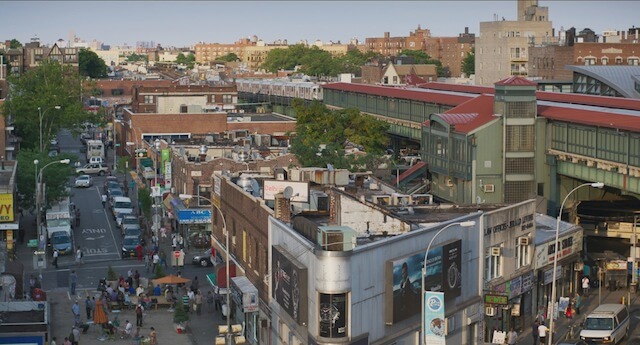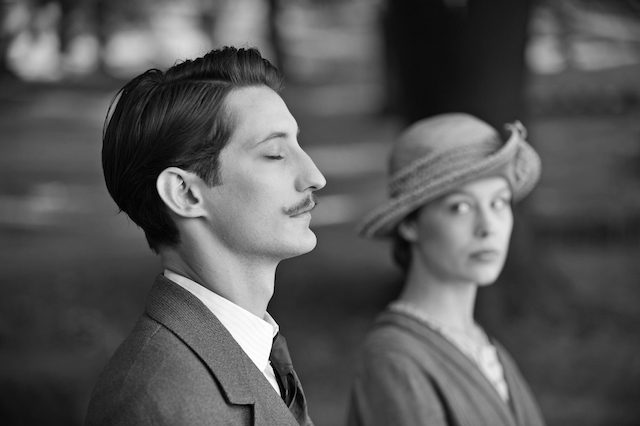‘In Jackson Heights’ A new Frederick Wiseman non-fiction film — he hates the word “documentary” — means once again explaining who Frederick Wiseman is and what he does. Since 1967’s “Titicut Follies,” at nearly one film a year, he’s headed into a different place, usually some kind of institution or a community. He films for a month or so, merely hanging back and observing and learning; he finds the movie over a lengthy, introspective editing process; then he heads back out for more. He’s currently 85 and “In Jackson Heights,” which drops in on the Queens neighborhood, is his third film in three years that pushes over the three-hour mark, one of them (“At Berkeley”) rounding out at four. It’s a good life. RELATED: Frederick Wiseman talks “National Gallery” and how “not everything is bad” Wiseman has a firm structure in place, and each film tends to concern itself with the same vague obsessions. “In Jackson Heights,” his 40th-or-so film, is another look at how a place works — how practicalities (money, jobs, routine) mesh with the messier parts of life (personalities, the inhumanity of bureaucracy, the resistance to the new). Every Wiseman staple is in place. He never intrudes upon his subjects, and certainly never into his frames. There are no protagonists and people weave in and out of his films, sometimes returning, sometimes only to be seen once. He doesn’t use narration or onscreen text, not even to identify someone of note, or the occasional flat-out celebrity. With exceptions (namely his first few films, which tended to be more activist in nature), there are no single, overarching themes or arguments, and any ideas you have to glean by intuiting them through what has been meticulously arranged on screen. If something is in a Wiseman film, even a long rambling speech at a town hall meeting, it’s there for a reason. He’s just not going to come out and tell you why. Each film, though, is a new beast, and a new opportunity to see an entire, rich microcosm through a worldview both narrow and open. Being a look at a community rather than an institution, “In Jackson Heights” is more focused on people, especially since it’s traveled to an uncommonly diverse hood. It visits places of worship, finding tight-knit enclaves finding solace in old traditions. It peeks in on bodegas and small businesses, some of which are struggling with rising rents, even leftfield foreclosures. It sits in on meetings and support groups, ranging from new immigrants trying to assimilate to LGBT people finding solace amidst oppression. Other times it simply people watches, or visits bars or stares at musical performances, often singling out the token white attendees, whose presence means not only that much more variety of life but also perhaps looming full-on gentrification. RELATED: “National Gallery” is a downright cosmic Frederick Wiseman film As ever, Wiseman uses his massive canvas to allow themes and ideas to bounce around, even off of previous films. One on hand you can pick and choose what themes attract you more; on the other, you can suss out exactly what Wiseman wants you to notice, at least subliminally. The sense of community — both the entire neighborhood and the individual, specific enclaves, sometimes keeping to themselves, other times intermingling — is strong, as is the sense of support. Wiseman allows certain speeches at meetings to go on in full, giving voice to the ignored. He doesn’t provide names, but the mere act of documenting specific plaints is powerful in and of itself. And not identifying anyone means no one is privileged, and everyone, ultimately, is the same. Just as affecting is the portrayal of a place steeped in the past — a city literally built upon the dead, existing with what came before. The churches and synagogues and mosques aren’t just tiny pockets of communities; they connect to centuries-old traditions and even the otherworldly. No one has as clear an eye as Wiseman, and with each deep dive in a new place he makes mere observance seem immersive. Walking out of “In Jackson Heights,” perhaps into your own community, everything seems newly electric and life itself becomes both small and endless.
Director: Frederick Wiseman
Genre: Documentary
Rating: NR
4 (out of 5) Globes
‘In Jackson Heights’ is typical Frederick Wiseman, namely immersive and profound

Zipporah Films
Follow Matt Prigge on Twitter @mattprigge


















